Spring Time is Turtle Time
By Thomas Waser In Cold Blooded CreaturesDespite a few remaining cold bouts, spring has finally sprung! And with spring comes a new generation of countless species of wildlife, including our good friends the turtles. Around this time of year, we can expect to see turtles of all sorts crossing local roadways looking for their breeding grounds, as well as newly hatched offspring preparing to make it on their own. Here are just a few things to remember when you see our shelled friends out and about:
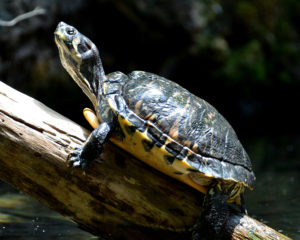

A yellowbelly slider perches on a log. Photo credit: Karl Rebenstorf
They don’t need our care!: These animals have always thrived in the wild and that’s not about to change. They do not need our care or interference to survive, and even seemingly defenseless hatchlings are usually well equipped to make it on their own. More often than not, our “assistance” is a hindrance to these animals and can even be detrimental to their survival. If you see an animal that you truly believe to be in trouble, consider calling a reptile rescue (or the VLM!) and let trained professionals assist the animal.
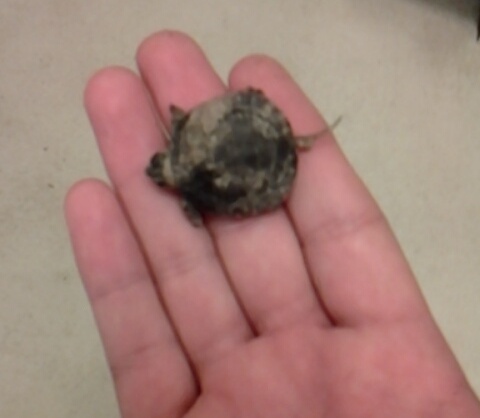

Newly hatched red-bellied turtle
Help that turtle cross the road…then leave it on its way: When you see a turtle crossing a busy road, there is nothing wrong with giving them a helping hand across. Move the turtle to the other side of the road in the direction it was heading. The turtle is likely crossing the street to get to a known pond or breeding ground, and once safely across, they can take care of themselves. A turtle on the road does not need to be rescued or taken home. If you spot a turtle that has been hit by a car, notify a vet or rescue that can deal with the animal in a professional manner.
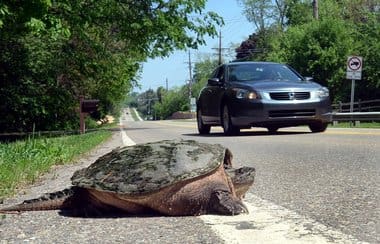

A common snapping turtle attempts to cross the road. Photo credit: Kathryn Carse
Leave the eggs where they lie: It’s not uncommon to come across turtle eggs, especially for gardeners. Many people feel these eggs need care, and so they remove them or try to take care of the eggs themselves, which can be detrimental to their survival. Reptile eggs require very specific conditions for hatching, and mother turtles will seek out nest sites that meet these conditions. Therefore, eggs are much more likely to survive in these locations with protection from predators and the elements. If you accidentally unearth a nest, try to gently rebury the eggs under loose soil. If the eggs must be moved, contact a local professional for help or advice.
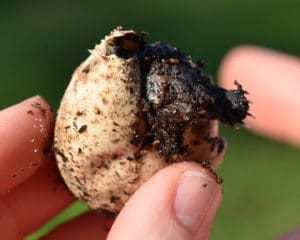

Common snapping turtle hatching. Photo Credit: Karl Rebenstorf
The turtle can live happily in your yard: Many people are surprised to find turtles living in their yards. We think of turtles as living “somewhere in the wild”, and it’s hard to imagine our yard as a suitable habitat. But remember, many wild animals such as birds, squirrels, rodents, raccoons, and others live in our yards, and turtles fit right in with them, likely having lived in the area long before our houses were built. “Wild habitats” can also contain higher populations of predators, so sometimes our yard is safer for the turtle. A wildlife officer can be called to remove the turtle if absolutely necessary, otherwise that turtle may live a long and happy life on your property. Just keep an eye on pets and exercise caution when mowing the lawn.
Wild turtles should always be left wild. These animals make very poor pets as they require a special ranged diet, lots of space, artificial (or actual) sunlight and they can be messy animals and live a very long time (box turtles may live to be well over 80 years old!). Wild turtles can also pose the risk of carrying diseases, such as salmonella, so cleanliness must be practiced. The best way to help any wild turtle is to let it be. These animals have survived for about 220 million years without our help, and they certainly don’t need our care now. So remember, if you see a wild turtle, take your pictures and move on; he’s perfectly happy right where he is.
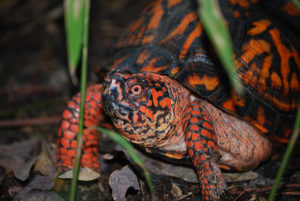

Eastern Box Turtle. Photo credit: Karl Rebenstorf







Travis Land
Well put Thomas 🙂
Debbie Bunn
Great post
Debbie Bunn
This is a great post for turtles
Billy Abbitt
The Box Turtle: the gentlest of all woodland creatures, and most every child’s first contact with nature.
Turtle Crossing | Folly Road Animal Hospital
[…] – What to do if you see a turtle –Types of turtles you may see in our area […]
Thomas Waser
Thank you for the additional information and support!
Amber
I really need someone to help me. My son found an alligator snapper in front of our house. Can you tell me where I could take this baby turtle to give it a better home?
Thomas Waser
Hi Amber,
Alligator snapping turtles are not native to Virginia, so I’ll wager it’s likely our eastern or common snapping turtle. More than likely it just hatched and simply hasn’t made it’s way to the water yet. If you have any ponds near your home, that would be the ideal location. They are incredible aquatic animals that feed heavily on fish, as the sooner he is in water, the better chance the little guy (or girl) will have!
If you have any further questions or concerns, you can reach out to me at thomas.waser@thevlm.org